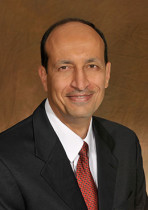 Professor Khalid Alshibli, along with his former graduate students Maha Jarrar (MS, 2016) and Andrew Druckrey (PhD, 2016) and Collaborator Riyadh Al-Raoush, Qatar University won ASCE’s J. James R. Croes Medal for their paper “Influence of Particle Morphology on 3D Kinematic Behavior and Strain Localization of Sheared Sand” published in the February 2017 issue of ASCE’s Journal of Geotechnical and Geoenvironmental Engineering. The research is funded by the National Science Foundation.
Professor Khalid Alshibli, along with his former graduate students Maha Jarrar (MS, 2016) and Andrew Druckrey (PhD, 2016) and Collaborator Riyadh Al-Raoush, Qatar University won ASCE’s J. James R. Croes Medal for their paper “Influence of Particle Morphology on 3D Kinematic Behavior and Strain Localization of Sheared Sand” published in the February 2017 issue of ASCE’s Journal of Geotechnical and Geoenvironmental Engineering. The research is funded by the National Science Foundation.

Granular materials can be natural materials such as sand, aggregates, gravel, coffee beans, and agriculture grains or manufactured materials such as pills, beads, food and pharmaceutical products. The behavior of sand as a foundation for a structure or processing and handling of manufactured granular materials (e.g., efficient flow of pills on production conveyer or behavior of grains in a silo) are examples of processes that require a fundamental understanding of engineering properties of granular materials.

Particle-to-particle interaction plays a major role in understanding the behavior of a larger mass of granular materials. Surface texture, shape of surface corners, and overall shape of a particle describe particle morphology properties that can be used to classify particles as spherical with rounded corners, non-spherical with sharp corners, angular, etc. A mass of granular material may fail along a shear band that has a certain orientation and thickness depending on the applied stresses, boundary conditions, and properties of the material. Knowing the onset and propagation of a shear band is critical for predicting the failure mode of granular materials which impacts the design and performance of structures that interact with granular materials.
Alshibli’s research answered fundamental questions about intrinsic particle properties that affect friction and dilatancy properties of granular materials, and this increased understanding will spur the development of new theories dealing with predicting the engineering behavior of granular materials. The results can be used to develop models capable of accurate prediction of the behavior of granular materials which will result in a more economical design of structures supported on granular materials and efficient development and performance of systems that handle and process granular materials.
“Congratulations to Dr. Alshibli and the Research Team on this award,” said Druckrey. “It was an honor to work on this research with the team and am delighted to see it being recognized on this scale!”
Jarrar added: “I am really excited that we won the award! It was both challenging and rewarding to be part of the research team, and it feels great that our hard work paid off.”
“It is a great honor to recognize the quality of our research in a very competitive process and win this award,” said Alshibli.